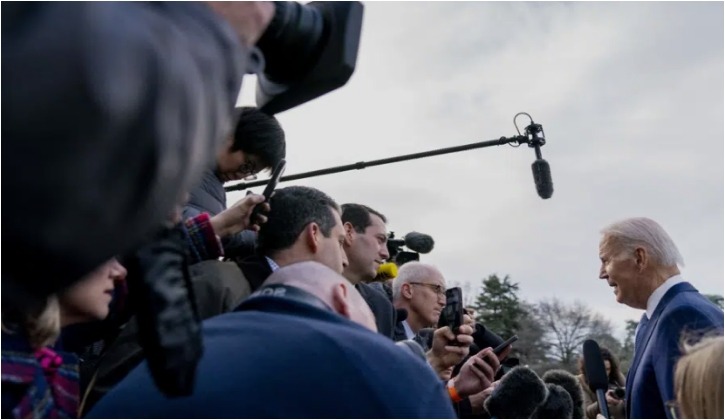
On the one-year anniversary of Russia’s invasion of Ukraine, the Biden administration declared its solidarity with the country by implementing new sanctions on Russia and strong words. The US has taken a number of ambitious efforts to bolster Ukraine, however, there are no signs of an endgame in the war, which is expected to enter a more complicated phase in the months ahead.
The Pentagon unveiled a new weapons package worth $2 billion, which includes ammunition, electronic warfare detection equipment, and other weapons to counter Russia’s unmanned systems, and several types of drones, including the upgraded Switchblade 600 Kamikaze attack drone. However, this aid package uses the Ukraine Security Assistance Initiative to provide funding for longer-term contracts to buy weapons and equipment.
Unlike the presidential drawdown authority that the Pentagon has used repeatedly over the past year to pull weapons from its own stocks and quickly ship them to Ukraine, the USAI-funded equipment could take a year or two to get to the battlefront. As a result, it will do little to help Ukraine prepare for an expected new offensive in the spring.
“Difficult times may lie ahead, but let us remain clear-eyed about what is at stake in Ukraine,” U.S. Defense Secretary Lloyd Austin said, “to ensure that a world of rules and rights is not replaced by one of tyranny and turmoil.”
In a virtual meeting with Ukrainian President Volodymyr Zelenskyy, the Group of Seven leaders, who have been at the forefront of backing Ukraine, stayed focused on a unified front. “Our solidarity will never waver in standing with Ukraine, in supporting countries and people in need, and in upholding the international order based on the rule of law,” the G-7 leaders said in a joint statement.
The White House said that new sanctions hitting over 200 people and entities will “further degrade Russia’s economy and diminish its ability to wage war against Ukraine.” The Biden administration will also further restrict exports to Russia and raise tariffs on some Russian products imported to the U.S. The administration hopes that these sanctions will deliver a knockout blow to the Russian economy, but the Russian economy has weathered sanctions better than expected in 2022, in part due to “the slow introduction of commodities sanctions,” according to a Moody’s Investors Service report.
The Russian economy is expected to weaken in 2023, with GDP shrinking by 3% this year, according to the Moody’s projection. The economy shrank 2.2% in 2022, far short of predictions of 15% or more that Biden administration officials had showcased at the start of the war.
Export controls and financial sanctions are gradually eroding Russia’s industrial capacity, but oil and other energy exports last year enabled Putin to keep funding the war.
While the conflict enters its second year, there are no indications that President Vladimir Putin will retreat from the conflict. The US has ruled out sending F-16 fighter jets to Ukraine, which President Zelenskyy has been pressing for.
White House officials have pushed back that they are not the weaponry that Ukrainians need in the near term. Biden said in an ABC News interview on Friday that he’s not ready to send F-16 fighter jets to Ukraine.
“Now, not only does Ukraine stand, but the global coalition in support of Ukraine is stronger than ever, with the G7 as its anchor,” Biden said on Twitter following Friday’s virtual meeting with Zelenskyy.
The G7 remains hopeful that these new sanctions on Russia and their combined efforts will ultimately lead to a peaceful resolution of the conflict. However, the conflict remains unpredictable and complex, and both sides must remain vigilant and prepared for whatever comes next.
